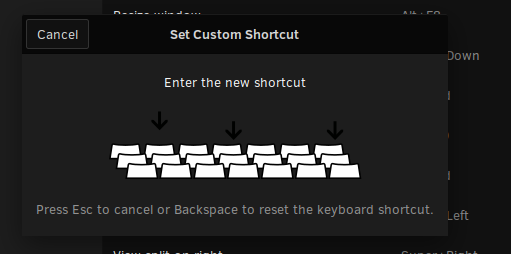

- #Print screen hotkey how to
- #Print screen hotkey install
- #Print screen hotkey software
- #Print screen hotkey windows
Take a screenshot on tablets: Press Power button + Volume down button. Take a partial screenshot: Press Shift + Ctrl + Show windows, then click and drag. Take a screenshot: Press Ctrl + Show Windows. Tip: To find shortcuts on this page, press Ctrl + f and enter what you're looking for. The shutter can also help to annotate, blur, crop, and upload images to other sites like Flameshot.You can use keyboard shortcuts to complete some tasks more quickly.

However, one major con of this tool is that its editing feature is disabled by default. Despite its inactive interface, Shutter seems to be a perfect choice for capturing, handling, and editing screenshots. Shutter is another popular tool for taking screenshots on Ubuntu and all major Linux distros. You can take a screenshot and edit it right away before you save it. You can take a look at how the Flameshot tool will work on your system below. Note that the functionality of the default screenshot tool for PrtSc will be disabled once you perform the steps above.

#Print screen hotkey install
To use Flameshot in Ubuntu, follow the simple steps below to first install the tool in your system.

This is then saved to the ‘Pictures’ directory. PrtSc – Captures a Screenshot of the entire screen as it is. Almost all Linux distros, including Ubuntu, support these shortcuts. These techniques work best when you don’t have to make any edits or changes to the screenshot later on. The first method is about utilizing keyboard shortcuts to capture an image of the contents on your desktop. Take Screenshots Through Keyboard Shortcuts in Linux However, in Ubuntu and other Linux distros, there are a number of techniques other than this.
#Print screen hotkey windows
They are usually taken when you have to share something from your screen with someone else’s.įor operating systems such as Windows and Mac, you can easily take screenshots using the print screen icon on the keyboard that captures your screen as it is. What Exactly Are Screenshots?Ī screenshot is an image of the data on your screen, while a screencast occurs when you record a video of the happenings on your screen. In addition, we will also find out the best screenshot tools you could get for Linux.
#Print screen hotkey how to
This tutorial below is a guide on how to take screenshots on Ubuntu using keyboard shortcuts and without making use of any third-party tools.
#Print screen hotkey software
Everything, including the downloads, software updates, and access to menu and browsers, is usually done through commands on the terminal. With most of us heavily relying on technology and communicative interfaces, there is still a fair share of people who use non-reciprocal command-driven interfaces. Its usage reminds us of how anything can be done through a perfectly annotated GUI and the existence of pointers and menu icons. Windows has the easiest and the most user-friendly interface I have ever come across.


 0 kommentar(er)
0 kommentar(er)
